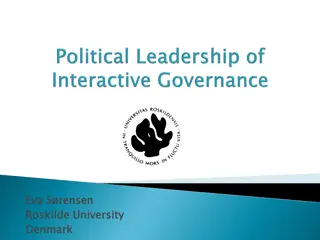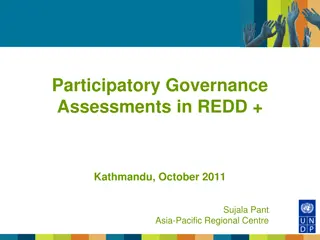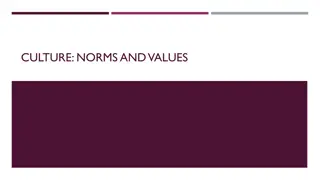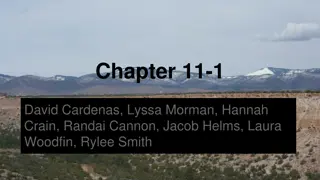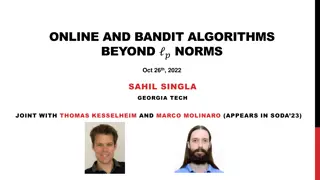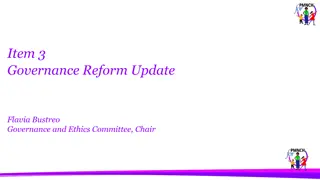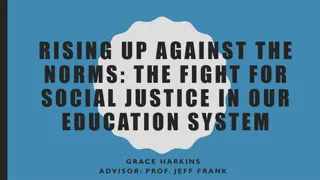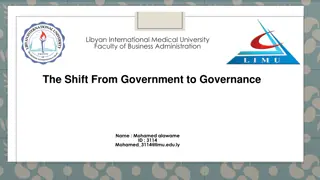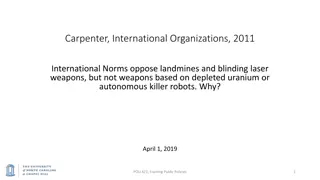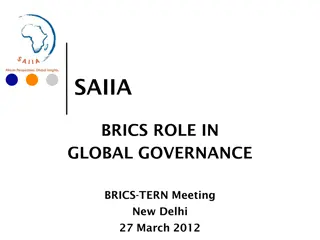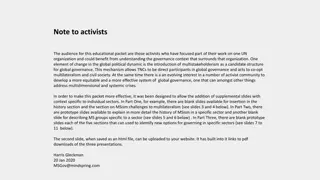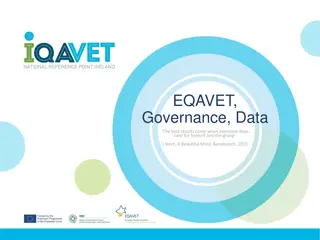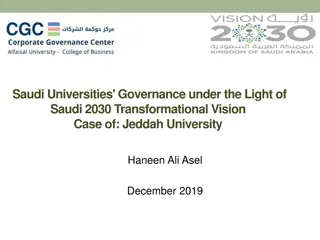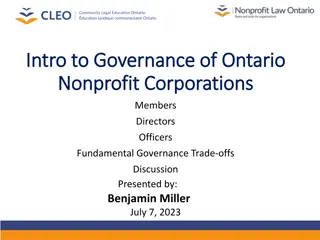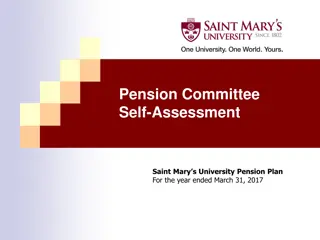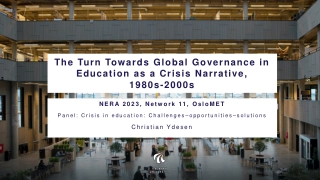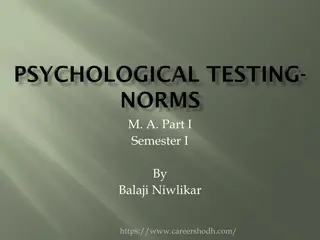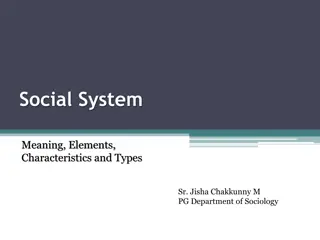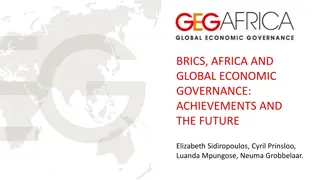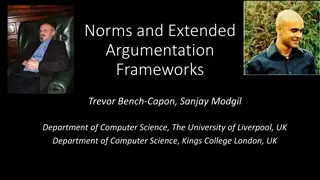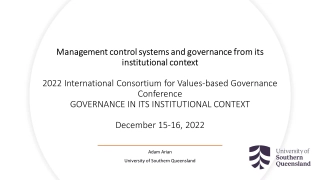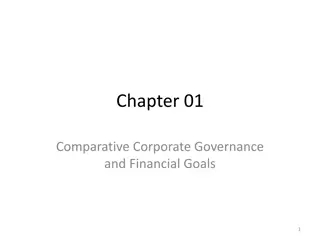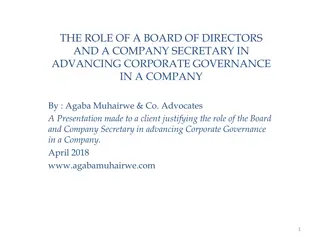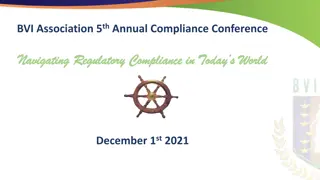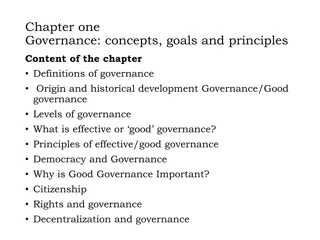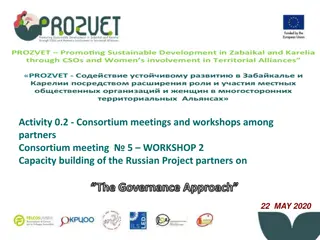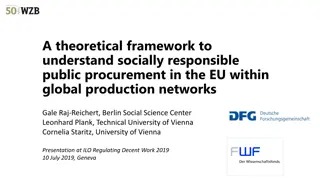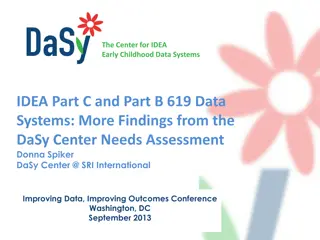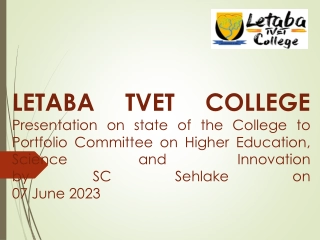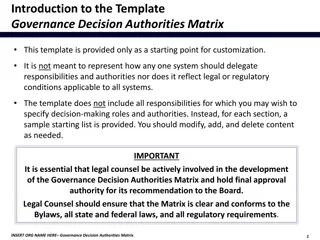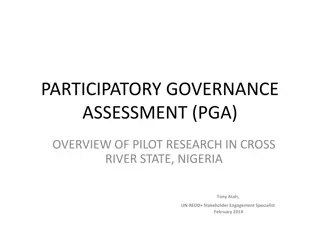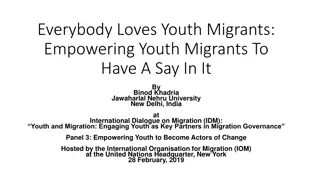Understanding Norms and Global Governance Dynamics
Explore the complex interplay between norms, governance structures, and international tribunals in the context of global perspectives and societal behavior. Discover how norms evolve, the roles of various stakeholders, and the impact on accountability and justice in a changing world landscape.
Download Presentation

Please find below an Image/Link to download the presentation.
The content on the website is provided AS IS for your information and personal use only. It may not be sold, licensed, or shared on other websites without obtaining consent from the author. Download presentation by click this link. If you encounter any issues during the download, it is possible that the publisher has removed the file from their server.
E N D
Presentation Transcript
NORMS Standard of appropriate behavior for actors with a given identity Quality of oughtness They must be distinguished from Institutions: collection of practices and rules Not all norms are legal norms Hard and Soft Norms
NORMS AND THE STATE Not all norms are state-driven or state-enforced It is increasingly not the case; well-reflected in the various modes of global governance Not all norms entrepreneurs are States: Multi-stakeholders governance Role of civil society (international jurisprudence; individual accountability for crimes against humanity; landmines; women s rights; etc.) Role of private sector: norms for the on-line world
NORMS CYCLE Norms start as ideas held by a few individuals Norm emergence, norm cascade (tipping point) and norm internalization, the first of which relies heavily on a norm entrepreneur Completion of the life cycle is not an inevitable process No definitive outcome or end point for normative change. Instead, normative change is continual, a product of the constant interplay between rules and behavior (Sandholtz)
NORMS AND TRIBUNALS Multiplication of international tribunals and jurisdictions: Norms fragmentation or conflict (dissonance) Parallel normative universe Common path and outcome Sikkink: What is emerging is not a new independent and supranational system of courts. Rather, we see a decentralized but interactive global system of accountability, in which international tribunals and international criminal law interact with domestic institutions and national and transnational civil society groups to help deter future crimes
GLOBAL GLOBAL PERSPECTIVE PERSPECTIVE IN 2015 IN 2015 37 out of 195 analyzed cases in 2015 37 out of 195 analyzed cases in 2015 adopted a global perspective adopted a global perspective 19% 19%
Global Case Global Case Perspective Perspective 2015 2015 [Full database: [Full database: 74.1% National and 25.9% International]
Middle East and Middle East and North Africa North Africa Case Perspective Case Perspective 2015 2015
North America North America Case Perspective Case Perspective 2015 2015
Asia and Asia Asia and Asia Pacific Pacific Case Perspective Case Perspective 2015 2015
Europe and Europe and Central Asia Central Asia Case Perspective Case Perspective 2015 2015
Europe Europe NOT including NOT including Russia/Central Asia: Russia/Central Asia: International International Perspective Perspective 2015 2015
Africa Africa Case Perspective Case Perspective 2015 2015
Latin America and Latin America and The Caribbean The Caribbean Case Perspective Case Perspective Global Perspective Global Perspective 28% International and/or Regional Law or Case National Law or Case 72%
LATIN AMERICA - OUT OF 62 DECISIONS: 21 cited decisions from the Inter 21 cited decisions from the Inter- -American Court for Human Rights American Court for Human Rights 18 cited US Courts decisions 18 cited US Courts decisions 12 cited Spanish Courts Decisions 12 cited Spanish Courts Decisions 9 cited European Court for Human Rights decisions 9 cited European Court for Human Rights decisions
MOST CITED NORMS MOST CITED NORMS 587 Cases Analyzed 587 Cases Analyzed ECHR, art. 10 ICCPR, art. 19 ACHR, art. 13 ACPHR, art. 9
MOST CITED JURISPRUDENCE MOST CITED JURISPRUDENCE ECtHR, Handyside v. United Kingdom (1976) ECtHR, Lingens v. Austria (1986) U.S., N.Y. Times Co. v. Sullivan (1964) ECtHR, Fressoz v. France (1999) ECtHR, Jersild v. Denmark (1994) ACHR, Claude Reyes y Otros v. Chile (2006) ACHR, Herrera Ulloa v. Costa Rica (2004)
NYT v Sullivan NYT v Sullivan a Global Journey a Global Journey
Handyside Handyside v UK v UK a Global Journey a Global Journey
Google v Spain Google v Spain Goes on a World Tour Goes on a World Tour
RTBF Globally RTBF Globally
PRELIMINARY CONCLUSIONS Principles: Principles: Importance Importance of of FoE FoE and Freedom of the Press to and Freedom of the Press to Human Human R Rights ights and D and Democracy emocracy Legal reasoning: Legal reasoning: Three Three part test / Proportionality / Balancing of rights part test / Proportionality / Balancing of rights References to international standards: Article 19, ICCPR or UDHR; Article 10, ECHR; Article References to international standards: Article 19, ICCPR or UDHR; Article 10, ECHR; Article 13, ACHR 13, ACHR There are Global Bestseller Decisions / A Global Top Chart There are Global Bestseller Decisions / A Global Top Chart Different factors account for which decisions is on the Chart (not all precedent setting) Interaction and dialogue amongst domestic and international tribunals through inter Interaction and dialogue amongst domestic and international tribunals through inter- - jurisdictional references jurisdictional references more could be done. more could be done. Three continents are reasonably well integrated from a normative standpoint: Europe Three continents are reasonably well integrated from a normative standpoint: Europe (without Russia/Central Asia); Africa; Latin America (without Russia/Central Asia); Africa; Latin America More to the global perspective than the final text of the decision More to the global perspective than the final text of the decision Amicus Curiae; Advice (Honduras case). And then there is And then there is the technology the technology


